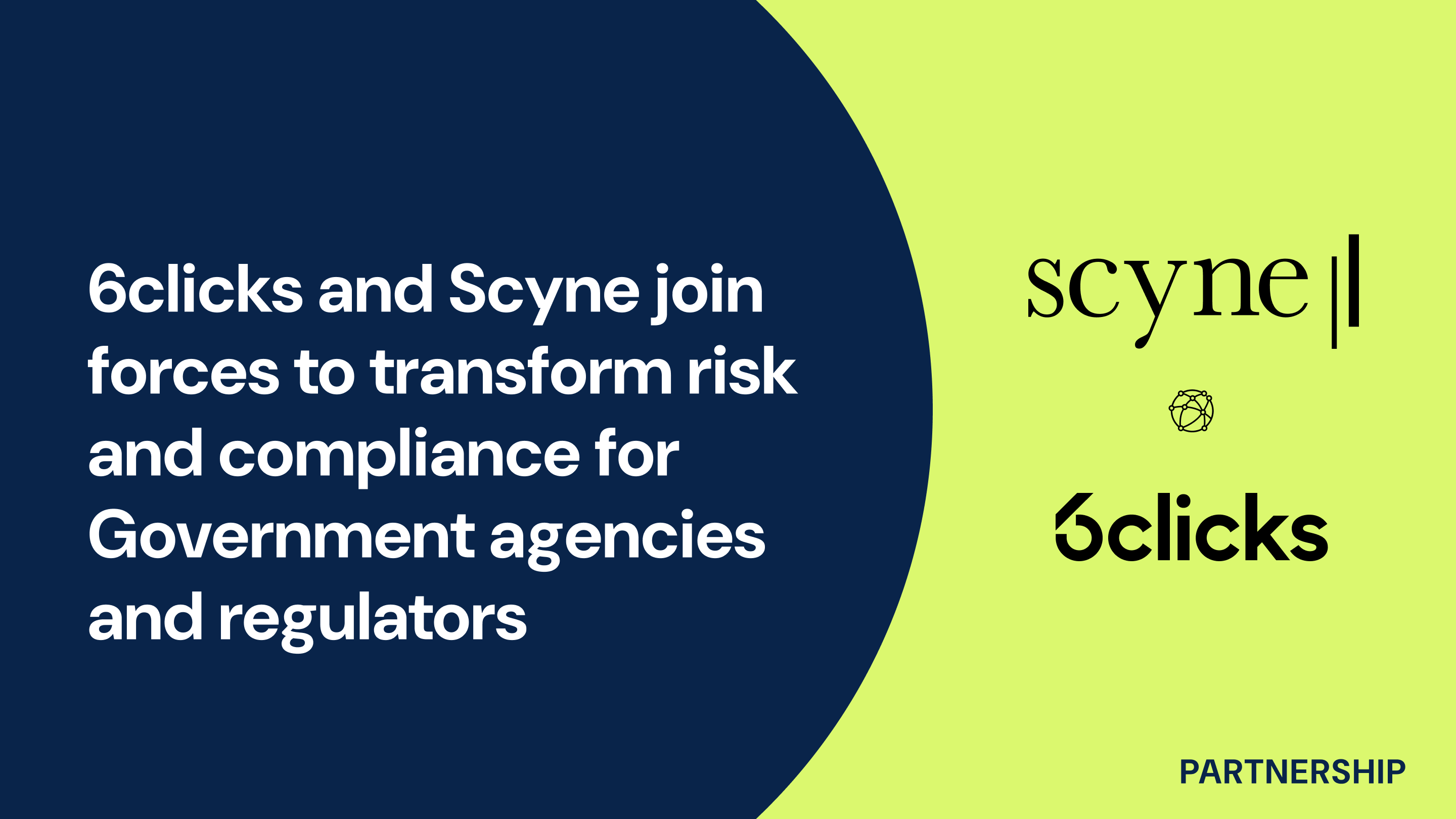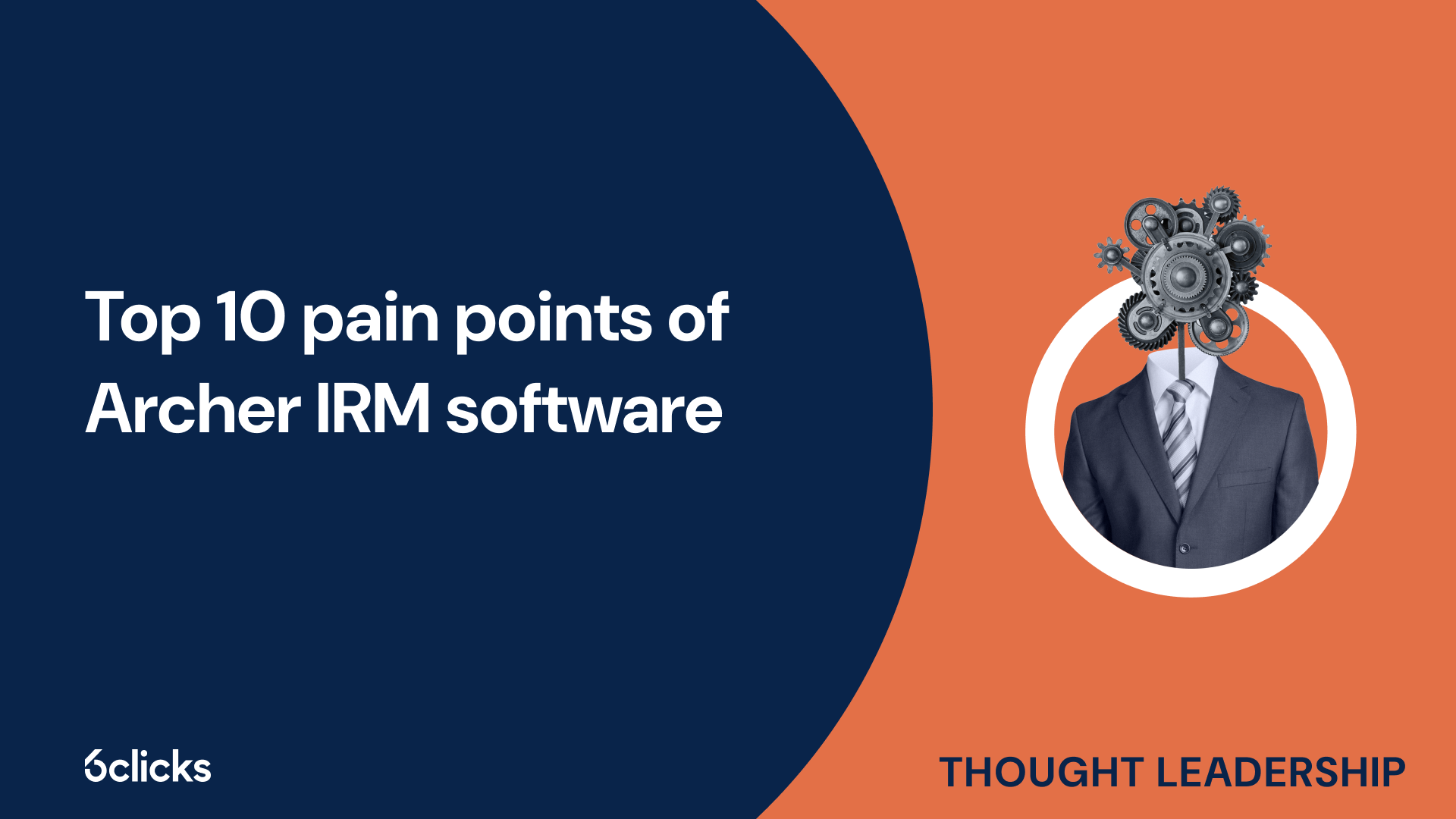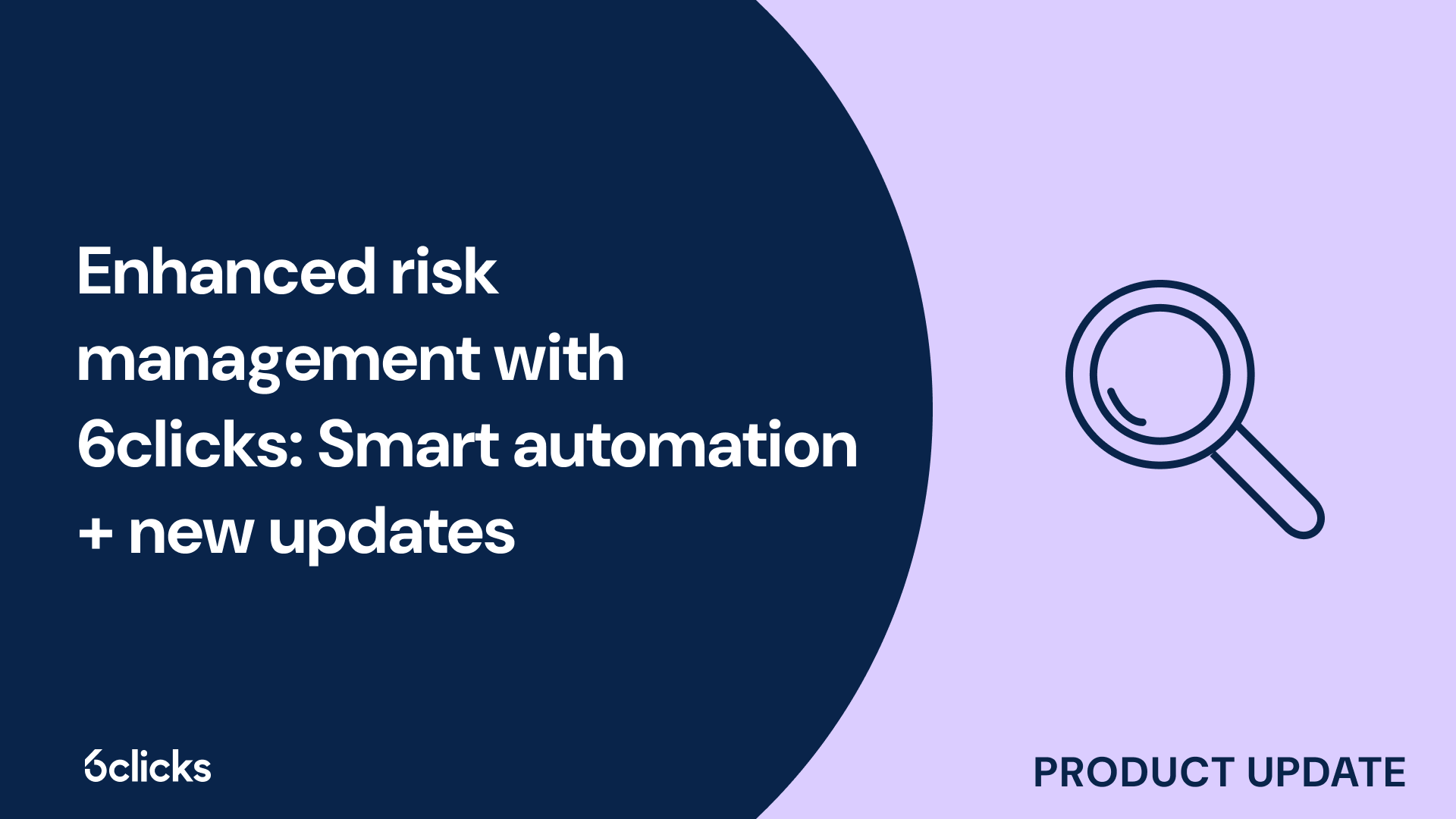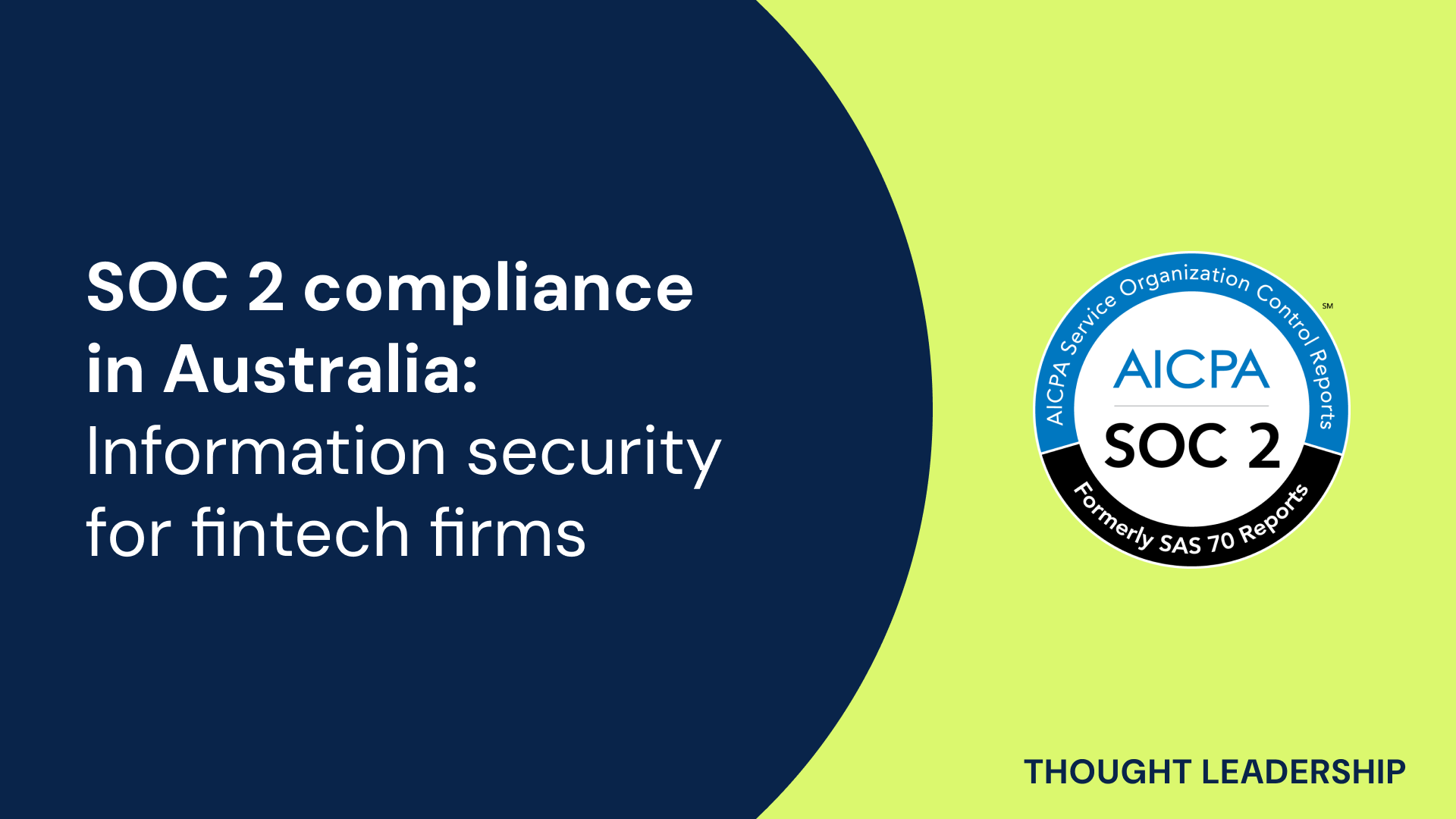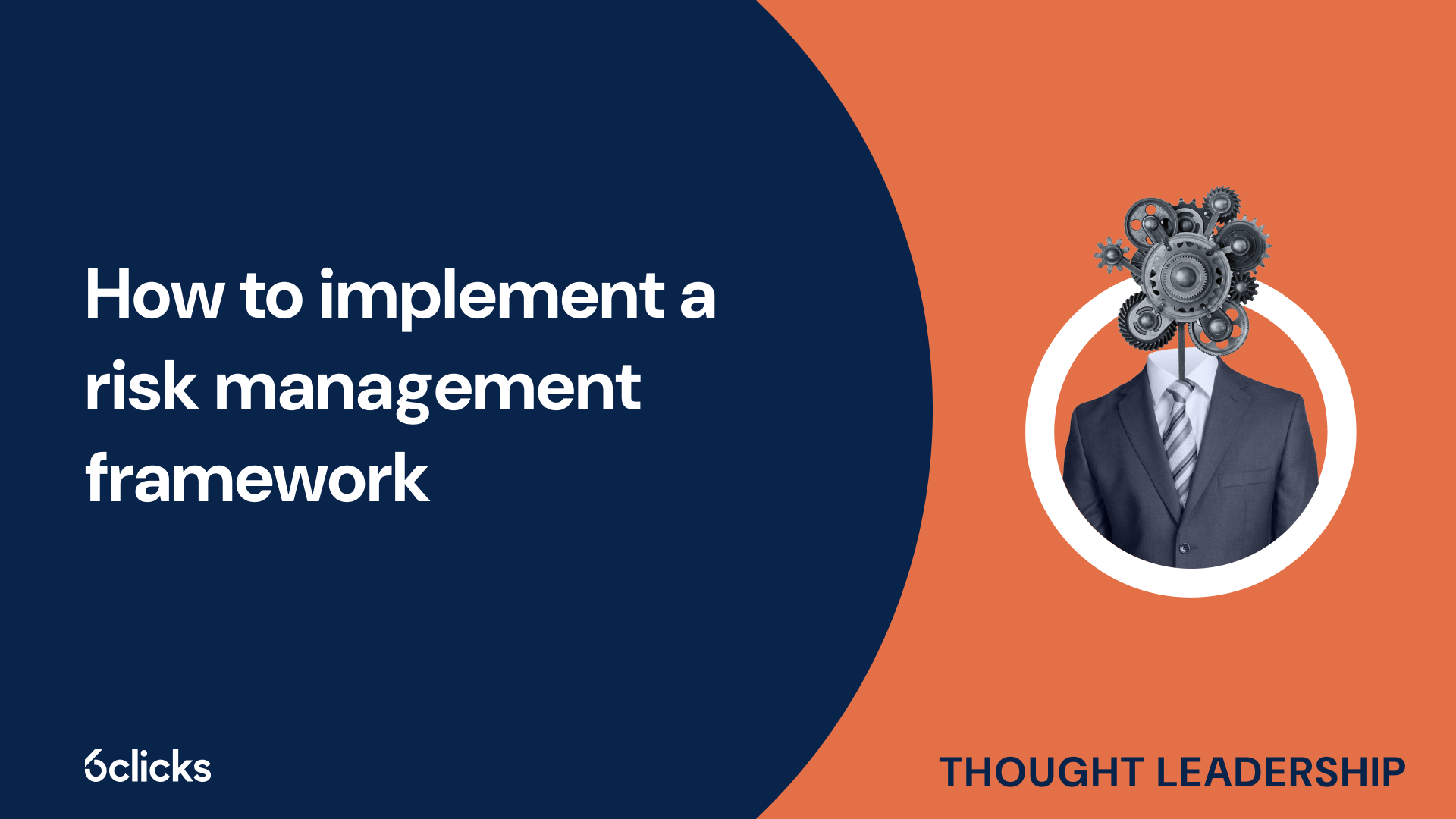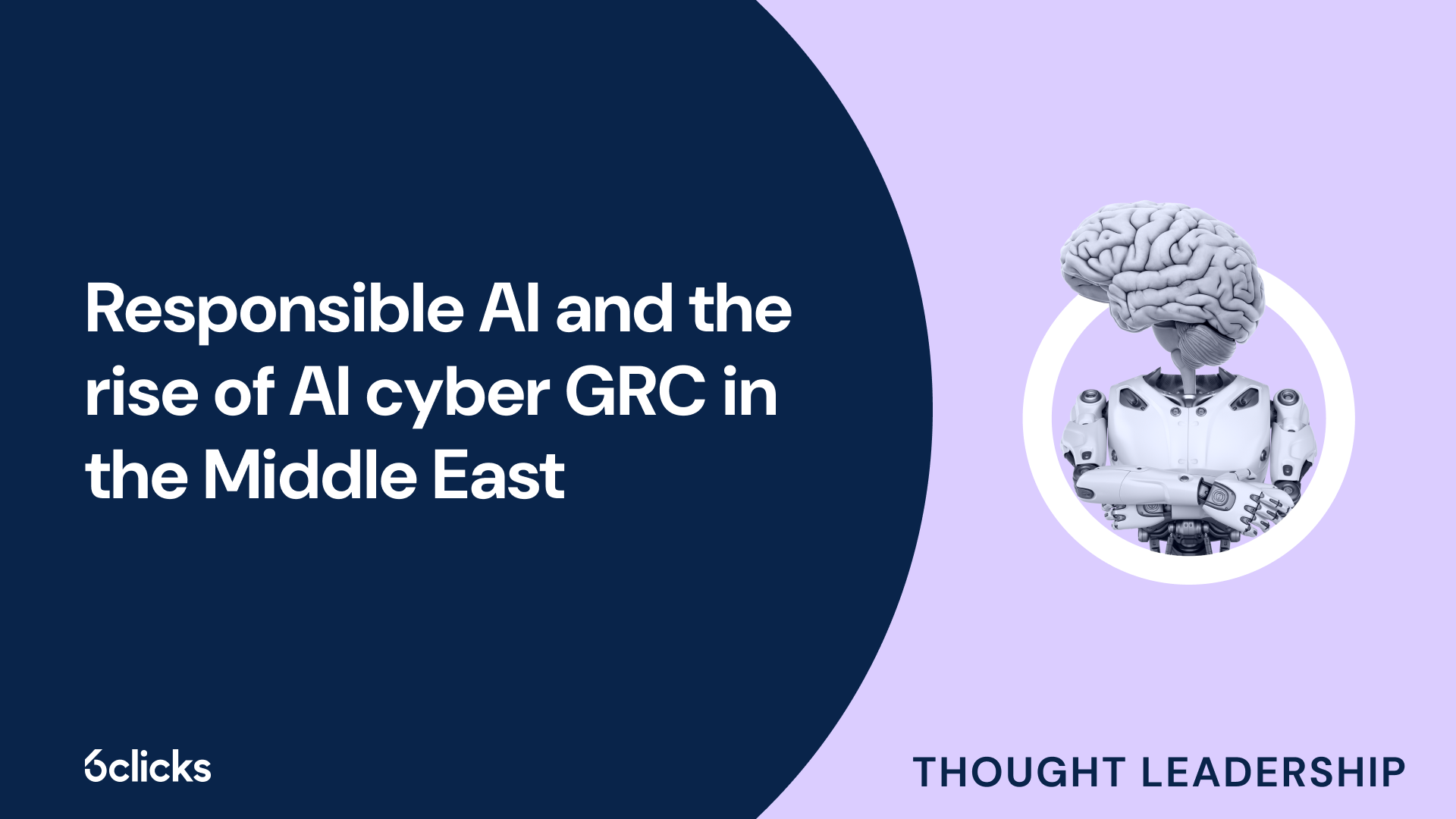Cyber Risk Management Expert Guide
Get the answer to this question "Is cybersecurity part of risk management?" For risk and compliance leaders from the team at 6clicks
-1.png?width=200&height=249&name=Group%20193%20(1)-1.png)
Cyber Risk Management Expert Guide
What is risk management?
Risk management is the process of identifying, assessing, and prioritizing potential risks that could negatively impact an organization's objectives or operations. It involves understanding potential threats and vulnerabilities, evaluating the likelihood of those risks occurring, and implementing strategies to mitigate or manage them. Effective risk management helps organizations proactively protect their assets and resources, minimize financial losses, maintain regulatory compliance, and ensure business continuity. It is an ongoing process that requires regular assessments, monitoring, and adjustment to address emerging risks and changes in the business landscape. By incorporating risk management into their operations, organizations can make informed decisions, allocate resources effectively, and enhance their overall resilience and security posture.
What is cybersecurity?
Cybersecurity is the practice of protecting digital assets, including applications and data, from unauthorized access, theft, or damage. It involves implementing technologies, processes, procedures, training programs, physical controls, and administrative practices to mitigate potential risks and threats.
In today's digital landscape, where technology is integral to business operations, cybersecurity plays a critical role in safeguarding sensitive information and ensuring business continuity.
Key elements of cybersecurity include measures such as anti-malware software, firewalls, encryption, Identity and Access Management (IAM), and other security measures. These tools help identify and prevent cyber threats, enable secure access to systems, and protect against data breaches or unauthorized changes.
As cybercriminals become more sophisticated, organizations must remain vigilant and continuously update their cybersecurity measures. This includes regular risk assessments, monitoring and analysis of security events, and ongoing training for employees.
By incorporating a robust cybersecurity framework, organizations can minimize the potential impact of cyber attacks, protect their reputation, and maintain the trust of their stakeholders. Ultimately, cybersecurity is a vital component of risk management, ensuring the integrity, availability, and confidentiality of digital assets.
The relationship between risk management and cybersecurity
Cybersecurity is an integral part of risk management. In today's digital world, organizations face a multitude of potential risks and threats, making it crucial to prioritize and address cybersecurity concerns in a structured manner. Risk management enables organizations to systematically identify and assess these risks and develop strategies to mitigate them effectively.
By conducting risk assessments, organizations can identify potential cybersecurity threats and vulnerabilities. This allows them to prioritize these risks based on their potential impact and likelihood, ensuring that resources are allocated appropriately to protect critical systems and digital assets. Additionally, risk management helps organizations establish security postures, which involve defining the security measures and controls required to safeguard their digital infrastructure.
Implementing cybersecurity frameworks is another essential aspect of risk management. These frameworks provide a structured approach to managing cybersecurity risks by outlining processes, controls, and best practices. They help organizations develop a comprehensive cybersecurity risk management program that addresses various aspects of security such as prevention, detection, response, and recovery.
By integrating cybersecurity into their risk management processes, organizations can proactively identify and address potential threats. This approach enables them to enhance their security posture, reduce the likelihood of cyber incidents, and minimize the potential impact of a breach. Ultimately, effective risk management in cybersecurity ensures the protection of sensitive information, maintains business continuity, and safeguards the reputation and trust of the organization and its stakeholders.
Assessing risk levels
Assessing risk levels is a crucial component of cybersecurity risk management. It involves evaluating the potential threats and vulnerabilities faced by an organization's digital infrastructure and determining the impact and likelihood of these risks. By conducting risk assessments, organizations can gain a clear understanding of their risk landscape and prioritize their security efforts accordingly. This process enables them to allocate resources effectively, ensuring that critical systems and digital assets are adequately protected. Risk assessments also help organizations identify areas where they need to implement additional security measures or controls, allowing them to proactively mitigate potential threats. By regularly assessing risk levels, organizations can stay ahead of emerging cyber risks and continuously improve their cybersecurity posture.
Identifying critical assets
Identifying critical assets is an essential step in the risk management process, as it helps organizations prioritize their resources and protect their most valuable assets. Here are the steps involved in identifying critical assets:
- Create an inventory: Start by creating an inventory of both logical and physical assets within the organization. Logical assets include databases, software applications, and digital information, while physical assets include servers, computers, and other hardware. This inventory will provide a comprehensive list of all the assets that need to be protected.
- Consider hijackable devices: It's crucial to consider devices that can be hijacked for attacks, such as Internet of Things (IoT) devices or employee-owned mobile devices that have access to the organization's network. These devices can serve as entry points for cyber threats and must be included in the assessment of critical assets.
- Build a network architecture diagram: A network architecture diagram helps visualize the communication paths and entry points within the organization's network. It shows how different assets are connected and highlights potential vulnerabilities or weak points. This diagram is an essential tool for identifying critical assets and understanding the potential impact of a security breach.
By following these steps and considering factors like logical and physical assets, hijackable devices, and network architecture, organizations can effectively identify their critical assets. This knowledge forms the foundation for developing a robust cybersecurity risk management strategy and implementing appropriate security measures to protect these assets.
Evaluating potential threats and risks
Evaluating potential threats and risks is a crucial step in cybersecurity risk management. This process involves analyzing the likelihood of threats exploiting vulnerabilities and determining the impact they would have on the organization. By understanding these factors, organizations can prioritize their efforts and allocate resources effectively to mitigate cyber risks.
To evaluate potential threats and risks, it is recommended to use a scale of 1 to 5 to rank the likelihood and impact of each risk. This ranking system allows for a quantitative assessment, providing a clear understanding of the magnitude of each risk. It is important to involve stakeholders and security experts in this process to ensure accurate assessment.
Documenting all identified risks in a risk register is also essential. The risk register should include details such as risk scenarios, date of identification, current security controls in place, mitigation plans, risk level, progress status, and residual risk. This comprehensive documentation helps in tracking the progress of risk mitigation efforts and serves as a reference for future risk assessments.
By evaluating potential threats and risks, organizations can develop a robust cybersecurity risk management program. This ongoing process ensures that risks are continually assessed and managed, allowing organizations to maintain a strong security posture and protect their critical assets from cyber threats.
Establishing security posture for digital assets
Establishing a strong security posture for digital assets is essential in today's digital landscape. To effectively protect these assets, it is crucial to assess their value and vulnerability to prioritize security efforts.
First, conducting an assessment of digital assets helps in understanding their importance and potential impact if compromised. Identifying critical assets and systems allows organizations to allocate resources and implement appropriate security measures accordingly. This prioritization ensures that security efforts are focused on safeguarding the most valuable assets.
Once the value and vulnerability of digital assets are determined, several key measures can be implemented to strengthen security posture. Implementing robust access controls helps in preventing unauthorized access to sensitive information or systems. Encryption should be employed to protect data both at rest and in transit, making it unreadable to unauthorized individuals.
Furthermore, monitoring tools play a vital role in establishing a strong security posture. Continuous monitoring and analysis of network traffic, system logs, and user activities can help identify and mitigate potential threats and vulnerabilities in real-time. This proactive approach allows for timely detection and response to any security incidents.
Implementing a cybersecurity framework
Implementing a cybersecurity framework is a crucial step in safeguarding digital assets from potential risks and threats. In today's digital landscape, where cyberattacks are becoming increasingly sophisticated, organizations need a comprehensive and robust cybersecurity strategy to protect their sensitive information and critical systems. A cybersecurity framework provides a structured approach to identifying, assessing, and managing cybersecurity risks. It helps organizations establish a set of guidelines and best practices to ensure that security measures align with the organization's risk tolerance and compliance requirements. By implementing a cybersecurity framework, organizations can effectively mitigate risks, enhance their security posture, and ensure the confidentiality, integrity, and availability of their digital assets. This framework serves as a blueprint for establishing security controls, defining responsibilities, conducting risk assessments, developing incident response plans, and continuously monitoring and improving the organization's cybersecurity measures.
Developing a comprehensive security plan
Developing a comprehensive security plan is an essential component of effective risk management in cybersecurity. This plan serves as a roadmap for identifying potential threats and risks, outlining the necessary measures to mitigate them, and establishing a strong security posture.
The first step in developing a comprehensive security plan is to identify critical assets within the organization. These are the digital assets and business functions that are essential to the operation and success of the company. Once these critical assets have been identified, the next step is to assess the potential threats and risks that could compromise their security.
Documenting roles and responsibilities within the security plan is crucial for ensuring accountability and clarity. This includes delineating the responsibilities of security teams and key stakeholders within the organization. Each team member should have a clear understanding of their role in implementing and maintaining the security plan.
Establishing a strong security posture involves implementing a cybersecurity framework. A cybersecurity framework provides a structured approach to managing and reducing cybersecurity risks. It outlines best practices, standards, and guidelines to help organizations assess their current security measures and improve their overall security posture.
Building an effective cybersecurity team
Building an effective cybersecurity team is essential for organizations to effectively manage the continuous nature of cybersecurity risk. With evolving threats and ever-changing technologies, having a team of experts dedicated to protecting digital assets is crucial.
One key role within the cybersecurity team is the Chief Information Security Officer (CISO). The CISO plays a vital role in developing and implementing the organization's cybersecurity risk management strategy. They are responsible for creating policies, establishing security controls, and ensuring compliance with regulatory requirements.
Security analysts are another essential component of the cybersecurity team. They are responsible for monitoring and analyzing security systems, identifying potential risks and vulnerabilities, and responding to security incidents. Their expertise in threat intelligence and incident response contributes to the overall security posture of the organization.
Incident responders play a critical role in mitigating the impact of cyber incidents. They are responsible for investigating and containing security breaches, coordinating with various stakeholders, and implementing remediation measures. Their swift and efficient response is crucial in minimizing damage and reducing downtime.
Collaboration and communication are key elements in building an effective cybersecurity team. It is essential for team members to work closely together, sharing information and expertise to address security challenges. Collaboration with other departments, such as IT and legal, is also crucial in implementing security measures that align with the overall goals and objectives of the organization.
Establishing an ongoing process for monitoring and reviewing security policies
Establishing an ongoing process for monitoring and reviewing security policies is a crucial aspect of cybersecurity risk management. This process ensures that security measures are regularly evaluated and updated to address emerging threats and mitigate potential risks. Here are the key steps to establish an effective ongoing process:
- Set up regular monitoring: Implement tools and systems that continuously monitor security controls, network infrastructure, and user activity. Automated alerts and notifications should be enabled to promptly identify and address any suspicious or unauthorized activities.
- Conduct regular policy reviews: Develop a schedule for reviewing security policies and procedures. This should include a thorough examination of the policies to ensure they align with industry standards, best practices, and any new regulatory requirements. Reviews should also consider changes in the organization's risk profile or technology landscape.
- Involve key stakeholders: Include representatives from various departments, such as IT, legal, and compliance, in the review process. This collaboration ensures that policies are comprehensive, realistic, and aligned with the organization's goals.
- Perform risk assessments: Regularly assess the organization's risk landscape to identify potential vulnerabilities, emerging threats, and areas of improvement. This assessment should help prioritize policy updates and allocate resources accordingly.
- Implement a feedback mechanism: Establish channels for employees to provide feedback and report potential issues or concerns. This feedback can help identify gaps in security policies or areas that require further clarification or training.
By establishing and maintaining an ongoing process for monitoring and reviewing security policies, organizations can proactively identify and address vulnerabilities, reduce the risk of cyberattacks, and ensure the long-term security of their digital assets. Continuous assessment facilitates the timely implementation of necessary security measures, keeping pace with the ever-evolving threat landscape.
Managing third-party vendors
Managing third-party vendors is a critical aspect of cybersecurity risk management. In today's interconnected world, organizations often rely on external vendors to perform various functions and provide services. However, these vendors can also introduce potential risks and vulnerabilities to the organization's cybersecurity posture. To effectively manage these risks, organizations must establish robust processes and controls to assess and mitigate the cybersecurity risks associated with third-party vendors. This includes implementing thorough due diligence and risk assessments when selecting vendors, establishing clear security requirements in contracts, regularly monitoring vendor compliance, and conducting ongoing audits and assessments to ensure the vendors adhere to the organization's cybersecurity standards. By actively managing the cybersecurity risks posed by third-party vendors, organizations can enhance their overall security posture and safeguard their valuable digital assets.
Understanding the impact of third-party vendors on cybersecurity risk management strategies
Understanding the impact of third-party vendors on cybersecurity risk management strategies is crucial in today's interconnected business landscape. While utilizing third-party vendors can bring many benefits, it also introduces potential risks and vulnerabilities that can compromise the security of an organization's digital assets.
One of the necessary steps to ensure compliance with third-party vendor agreements and practices is conducting thorough risk assessments. This involves identifying and assessing potential risks that may arise from the involvement of third-party vendors, such as data breaches, unauthorized access, or the introduction of malicious software. By understanding these risks, organizations can take appropriate measures to mitigate them and establish clear security expectations with their vendors.
Ongoing monitoring and oversight of third-party vendors are also essential in mitigating cybersecurity risks. This involves continuously assessing the security posture of vendors, monitoring their adherence to security policies, and ensuring the implementation of necessary access controls and security measures. Regular audits and assessments can help identify any potential vulnerabilities or weaknesses and address them promptly.
Ensuring compliance with third-party vendor agreements and practices
Ensuring compliance with third-party vendor agreements and practices is critical for organizations to protect their digital assets and mitigate cybersecurity risks. Incorporating relevant regulations and industry standards into vendor agreements helps establish clear expectations and requirements regarding cybersecurity.
The first step in ensuring compliance is conducting due diligence on vendors. This involves evaluating their cybersecurity practices and risk management frameworks. Organizations should assess the vendor's security policies, procedures, and controls to determine their capability to protect sensitive data and assets. It is crucial to consider the vendor's experience in handling cybersecurity incidents and their incident response capabilities.
When assessing vendor compliance, contractual requirements play a significant role. The vendor agreement should clearly outline the cybersecurity measures that vendors are expected to implement, such as encryption, access controls, and monitoring. Data protection measures, such as regular backups, secure data transmission, and secure storage, should also be evaluated.
Furthermore, organizations should consider the vendor's incident response capabilities. A strong incident response plan and the ability to promptly detect, respond to, and recover from cybersecurity incidents are essential. By assessing vendor compliance with incident response requirements, organizations can ensure that the vendor is prepared to mitigate the impact of any potential cyber threat.
Addressing human error as part of risk management
Addressing human error is a crucial aspect of risk management when it comes to cybersecurity. While technological solutions and robust cybersecurity frameworks are essential, human error can still pose significant risks. In fact, studies have shown that a considerable number of cybersecurity incidents are caused by human mistakes or negligence.
To mitigate these risks, organizations can implement various measures to minimize human error. Employee training programs play a crucial role in educating and raising awareness among employees about cybersecurity best practices. These programs can teach employees about the potential risks they may encounter, such as phishing attempts or social engineering attacks, and provide them with the knowledge and skills to recognize and respond to these threats effectively.
Implementing strong access controls is another critical measure. By ensuring that only authorized individuals have access to sensitive data and systems, organizations can reduce the likelihood of accidental or intentional misuse. This can involve implementing multi-factor authentication, regularly reviewing and updating user access privileges, and enforcing the principle of least privilege.
Clear and comprehensive security policies are also vital in addressing human error. By establishing guidelines and procedures for employees to follow, organizations can set clear expectations and provide a framework for secure behavior. Policies should cover topics such as password management, proper handling of sensitive information, and acceptable use of company resources.
By addressing human error as part of their risk management strategy, organizations can significantly minimize cybersecurity risks and better protect their digital assets. Through employee training programs, strong access controls, and clear security policies, they can create a culture of security awareness and responsibility within the organization.



